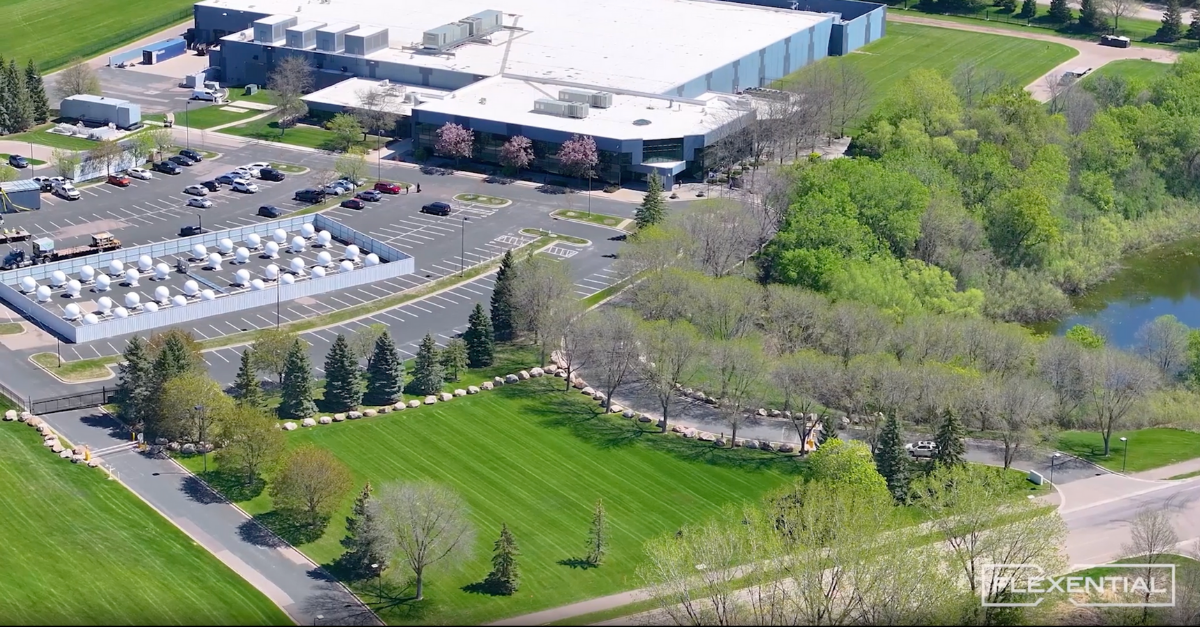What is Data Center Interconnect?
Data Center Interconnect (DCI) is a vital technology that connects data centers spread across different geographical locations. It plays an essential role in modern digital infrastructure, addressing the challenges of growing data volumes, cloud computing, and the need for robust disaster recovery and business continuity plans.

The technologies used in DCI are designed for high-speed, secure, and reliable connections. They can be implemented via different methods, and the choice among these options depends on several factors, including the required data transfer speeds, security considerations, and the physical distance between the data centers, which we will review later in this blog.
Objective of Data Center Interconnect
DCI's main function is to enable seamless communication and data transfer between these distributed data centers. Ensuring that data and applications are consistently available, synchronized, and accessible across multiple sites is contingent upon interconnectivity. Connectivity like this is how to improve network performance and interconnection, improve redundancy, and offer scalability, addressing the needs of modern enterprises that depend on cloud computing, big data, and distributed storage
By combining data management and IT resources, DCI plays a crucial role in helping businesses optimize and extend their network architecture and continue to run continuously. Additionally, it is essential for fulfilling the low latency and high bandwidth requirements of various applications, such as financial transactions and multimedia delivery.
In addition, strategically interconnected data centers provide better access to regional networks and internet exchange points, which benefits end users all over the world. A solid DCI strategy is essential for maintaining competitiveness and operational effectiveness as firms expand internationally.
The Importance of DCI for businesses and organizations
DCI is critically important for businesses and organizations, and one of the main reasons is that it is essential for ensuring operational efficiency and reliability. A well-designed and maintained data center infrastructure helps organizations achieve superior performance and interconnection, significantly enhancing the uptime of critical IT systems. This is crucial for businesses as downtime can lead to substantial financial losses and damage to reputation.
Additionally, DCI plays a pivotal role in supporting scalability and flexibility in IT operations. A solid data center architecture can adjust to the changing needs of enterprises as they expand and their data requirements change, allowing companies to scale resources up or down as needed. In a time when business is expanding at an exponential rate and users and data quantities are skyrocketing, scalability is essential.
DCI is essential when it comes to security and compliance. Protecting sensitive data and maintaining business continuity requires a secure and compliant data center architecture, which is made necessary by the rising frequency of cyber threats and strict regulatory requirements. This aspect of DCI provides organizations with the confidence that their critical data is safe and their operations are in line with legal and ethical standards.
Understanding Data Center Interconnect architecture
Now that we know what DCI is and why it’s important let's examine the underlying architecture that supports it. We'll look at the essential elements of DCI architecture as well as the many varieties of DCI architectures that are now in use.
Key components of Data Center Interconnect architecture
The key components of DCI architecture are the core physical and hardware-based resources and facilities that house and maintain enterprise IT operations, including servers, storage systems, networking equipment, and data center services, all working together to enable efficient and reliable connectivity between data centers. Here are the primary components:
Physical connectivity: This involves the physical links that connect data centers. It typically includes fiber optic cables, which are preferred for their high-speed data transmission capabilities over long distances. These physical links are the foundational layer of the DCI.
Networking equipment: This category includes switches, routers, and other devices that facilitate data transfer between data centers. High-capacity, low-latency equipment is crucial for effective DCI, as it ensures quick and reliable data transmission.
Virtualization technology: Virtualization allows for the creation of multiple virtual networks over a single physical infrastructure, which enhances the efficiency and flexibility of data center interconnects by allowing different types of traffic to be segregated and managed effectively.
Wavelength-division multiplexing (WDM): WDM is a technology that multiplies the capacity of fiber optic cables by sending multiple signals at different wavelengths simultaneously. This is particularly important for DCI as it significantly increases bandwidth, allowing for the handling of larger volumes of data.
Software-defined networking (SDN): SDN provides a more flexible and efficient way to manage network resources. By decoupling the network control and forwarding functions, SDN allows network administrators to programmatically initialize, control, change, and manage network behavior dynamically via open interfaces.
Encryption and security protocols: Given the critical nature of the data being transferred, robust encryption and security protocols are essential components of DCI architecture. These measures protect data integrity and confidentiality during transit between data centers.
Optical transport network (OTN): OTN is a set of optical network standards that enable the efficient transport of data over optical fiber networks. It is designed to support high-bandwidth data transmission, which is a key requirement in DCI.
Cross-connects: These are physical hardware that connect the cables and equipment within a data center and between different data centers. Cross-connects are crucial for routing data efficiently and effectively in a DCI setup.
Bandwidth management tools: These tools are used to monitor and manage the flow of data, ensuring that the network does not become congested, and that bandwidth is allocated effectively to meet varying demands.
Cloud Interconnects: For data centers that integrate with cloud services, cloud interconnects provide direct, private connections to public cloud providers. This ensures faster and more secure data transfer between on-premises data centers and cloud environments.
Each component plays a specific role in ensuring that data centers are not only connected but do so in a way that is efficient, secure, and scalable.
Different types of Data Center Interconnect architecture
Different types of DCI architectures cater to various needs and scenarios in connecting data centers. These architectures are designed to address specific challenges such as distance, scalability, security, and performance requirements. Below are the primary types of DCI architectures:
Point-to-point interconnects: This is the simplest form of DCI, where two data centers are connected directly through point-to-point connections with each other. This architecture is straightforward and is often used for short distances.
Multipoint interconnects: In this architecture, multiple data centers are interconnected in a network, allowing each data center to communicate with several others.
Hub-and-spoke interconnects: This approach involves a central 'hub' data center that connects to various 'spoke' data centers. This model can reduce the complexity of managing numerous direct connections between each data center, and it's effective for centralized control of data center operators and resources.
Meshed interconnects: In a meshed architecture, data centers are interconnected in a flexible, grid-like structure. Mesh interconnection provides high redundancy, as data can be rerouted through various paths if one connection fails. It's ideal for ensuring high availability and resilience.
Cloud-based interconnects: This architecture integrates traditional data center infrastructure with cloud services. Data centers are connected to public or private cloud providers, facilitating seamless data and resource sharing between on-premises and cloud environments. This is increasingly popular due to the flexibility and scalability of cloud services.
Software-defined interconnects (SDI): Leveraging SDN, this architecture offers a high degree of flexibility and control. Network resources are managed through software, allowing for dynamic, programmable interconnects that can adapt to changing requirements.
Virtualized interconnects: This type employs virtualization technology to create multiple, distinct networks over the same physical infrastructure. It's useful for organizations that need to segregate different types of traffic (e.g., production, development, and testing) within the same data center network.
Overlay networks: This architecture uses a virtual network built on top of an existing physical network, enabling the creation of scalable and flexible inter-data center connections. Overlay networks can simplify the process of connecting and managing different data centers.
Each type of DCI architecture offers unique advantages and may be more suitable for certain operational contexts. The choice of architecture depends on the specific needs of the organization, such as the full workload mobility, required level of connectivity, scalability, redundancy, and cost considerations.
Data Center Interconnect technologies
DCI technologies offer diverse and robust connectivity options for businesses. Among the various technologies utilized for DCI, three stand out for their effectiveness and wide adoption: Fibre Channel over Ethernet (FCoE), Virtual Private LAN Service (VPLS), and Multiprotocol Label Switching (MPLS). Each technology offers unique benefits and is suited for different network requirements and scenarios.
Fibre Channel over Ethernet (FCoE)
FCoE is a technology that converges Fibre Channel and ethernet networks, transporting Fibre Channel traffic over an Ethernet network, enabling the consolidation of data and storage networking. This technology is particularly useful in DCI as it allows for the seamless integration of storage area networks with existing ethernet infrastructures, reducing the complexity and cost of maintaining separate networks. FCoE is ideal for organizations looking to streamline their data center operations by combining their data and storage connectivity over a single network infrastructure.
Virtual Private LAN Service (VPLS)
Virtual Private LAN Service is a Layer 2 service that extends LAN connectivity across a wide area network (WAN). VPLS uses MPLS technology to connect different sites over a metro or wide area ethernet, making it appear as if they are on the same local network. It offers significant flexibility, allowing businesses to create a seamless, scalable, and secure Ethernet-based network connecting multiple locations. VPLS is particularly beneficial for businesses with geographically dispersed data centers requiring high levels of data synchronization and real-time data replication.
Multiprotocol Label Switching (MPLS)
Multiprotocol Label Switching is a protocol-agnostic routing technique designed to speed up and shape traffic flows across enterprise-wide areas and service provider networks. MPLS directs data from one node to the next based on short path labels rather than long network addresses, avoiding complex lookups in a routing table and significantly speeding up traffic flows. In DCI, MPLS is used to create virtual private networks, providing secure and efficient data transport between different data centers.
Benefits of Data Center Interconnect
DCI offers several key benefits that are crucial for modern businesses and organizations relying on data-intensive operations. Here are five notable benefits:
Enhanced performance and reliability
DCI enables faster and more reliable data transfer between data centers, which is particularly important for applications requiring real-time data access and processing. By ensuring high-speed connectivity and reducing latency, DCI enhances the overall performance of networked applications, leading to improved user experiences and operational efficiency.
Disaster recovery and business continuity
By interconnecting multiple data centers, organizations can replicate data and applications across different geographical locations, ensuring that in the event of a disaster or system failure at one site, critical operations can continue at another site, minimizing downtime and data loss.
Scalability and flexibility
As organizations grow, their data requirements often increase. DCI provides the scalability necessary to expand IT resources without major disruptions. Businesses can easily add new data centers to the network or increase the capacity of existing connections.
Improved security
With DCI, organizations can implement uniform security policies across all interconnected data centers, enhancing overall data security. Advanced encryption and secure transmission protocols in DCI architectures also ensure that data remains protected during transit.
Cost efficiency
By interconnecting data centers, organizations can optimize resource utilization and reduce costs. For example, data centers in different locations can share resources such as storage and processing power, leading to more efficient use of IT infrastructure. Additionally, DCI can reduce the need for physical infrastructure by allowing organizations to leverage shared or cloud-based resources, further cutting down on capital and operational expenses.
Challenges with Data Center Interconnect implementation
Implementing DCI solutions poses critical challenges. Establishing diverse and redundant connectivity paths is crucial for high availability but requires intricate network design and infrastructure investment. Tasks like set-up, integration, and deployment to carriers, clouds, and IT service providers are intricate and time-consuming, involving configuring hardware and ensuring compatibility. Managing relationships with multiple carriers adds complexity, requiring negotiations and coordination.
Maintaining high availability and resilience demands measures to avoid congestion and latency, necessitating a robust infrastructure with automatic failover capabilities. Scalability is a significant challenge, requiring infrastructure that efficiently accommodates future growth. Addressing security and compliance risks is imperative, involving the implementation of robust encryption and security protocols. Successfully navigating these challenges is essential for seamless DCI implementation.
Flexential DCI services and solutions
Flexential Data Center Interconnect services and connectivity solutions represent a cutting-edge approach to overcoming common interconnection challenges faced by modern businesses. At the heart of these services is the promise of connecting over a highly reliable and resilient high-speed network, ensuring full end-to-end management. The service provides up to 10 Gbps of connectivity to 41 Flexential data centers and 11 national carrier hotels, with a 100 Gbps dedicated network backbone, offering unparalleled connectivity from a single data center provider.
Flexential Data Center Interconnect solutions provide businesses with a resilient, redundant, private, and cost-effective service designed to deliver high performance and reliability. This service is particularly beneficial for companies looking to digitally transform by connecting to cloud service providers, peering exchanges, national and international carriers, and existing business providers, all while being backed by a team of experienced backbone engineers and comprehensive support.
Download more information about Flexential Data Center Interconnect here.







